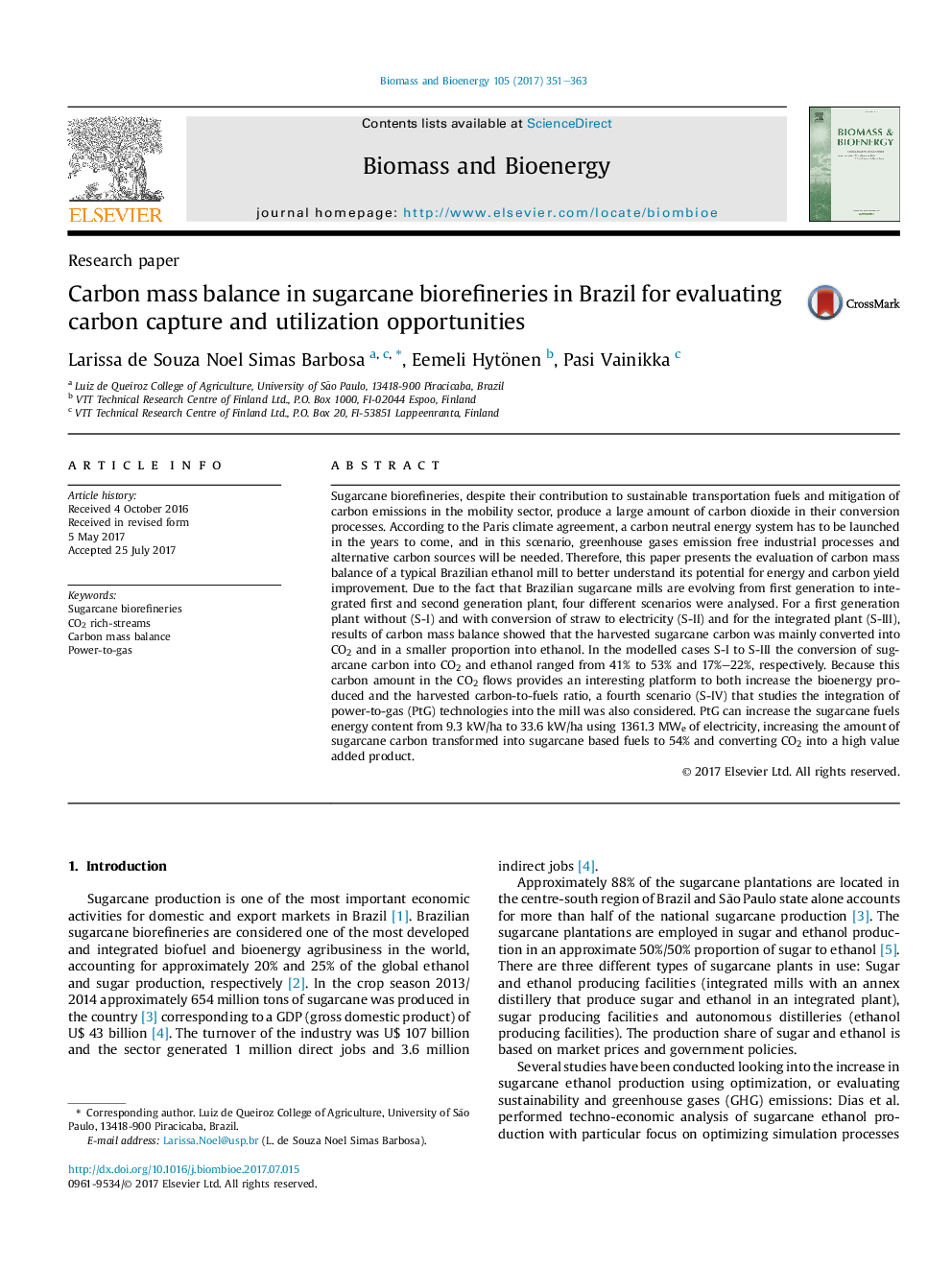| کد مقاله | کد نشریه | سال انتشار | مقاله انگلیسی | نسخه تمام متن |
|---|---|---|---|---|
| 4996173 | 1459788 | 2017 | 13 صفحه PDF | دانلود رایگان |
عنوان انگلیسی مقاله ISI
Carbon mass balance in sugarcane biorefineries in Brazil for evaluating carbon capture and utilization opportunities
ترجمه فارسی عنوان
تعادل توده کربن در کارخانه های زراعی نیشکر در برزیل برای ارزیابی قابلیت جذب و استفاده از کربن
دانلود مقاله + سفارش ترجمه
دانلود مقاله ISI انگلیسی
رایگان برای ایرانیان
موضوعات مرتبط
مهندسی و علوم پایه
مهندسی شیمی
تکنولوژی و شیمی فرآیندی
چکیده انگلیسی
Sugarcane biorefineries, despite their contribution to sustainable transportation fuels and mitigation of carbon emissions in the mobility sector, produce a large amount of carbon dioxide in their conversion processes. According to the Paris climate agreement, a carbon neutral energy system has to be launched in the years to come, and in this scenario, greenhouse gases emission free industrial processes and alternative carbon sources will be needed. Therefore, this paper presents the evaluation of carbon mass balance of a typical Brazilian ethanol mill to better understand its potential for energy and carbon yield improvement. Due to the fact that Brazilian sugarcane mills are evolving from first generation to integrated first and second generation plant, four different scenarios were analysed. For a first generation plant without (S-I) and with conversion of straw to electricity (S-II) and for the integrated plant (S-III), results of carbon mass balance showed that the harvested sugarcane carbon was mainly converted into CO2 and in a smaller proportion into ethanol. In the modelled cases S-I to S-III the conversion of sugarcane carbon into CO2 and ethanol ranged from 41% to 53% and 17%-22%, respectively. Because this carbon amount in the CO2 flows provides an interesting platform to both increase the bioenergy produced and the harvested carbon-to-fuels ratio, a fourth scenario (S-IV) that studies the integration of power-to-gas (PtG) technologies into the mill was also considered. PtG can increase the sugarcane fuels energy content from 9.3Â kW/ha to 33.6Â kW/ha using 1361.3 MWe of electricity, increasing the amount of sugarcane carbon transformed into sugarcane based fuels to 54% and converting CO2 into a high value added product.
ناشر
Database: Elsevier - ScienceDirect (ساینس دایرکت)
Journal: Biomass and Bioenergy - Volume 105, October 2017, Pages 351-363
Journal: Biomass and Bioenergy - Volume 105, October 2017, Pages 351-363
نویسندگان
Larissa de Souza Noel Simas Barbosa, Eemeli Hytönen, Pasi Vainikka,
